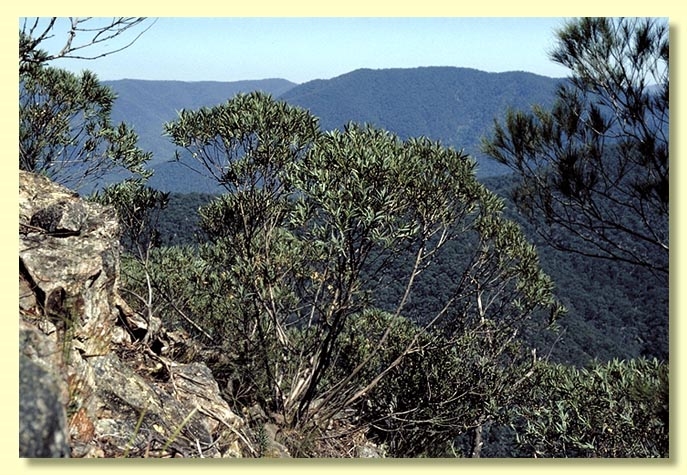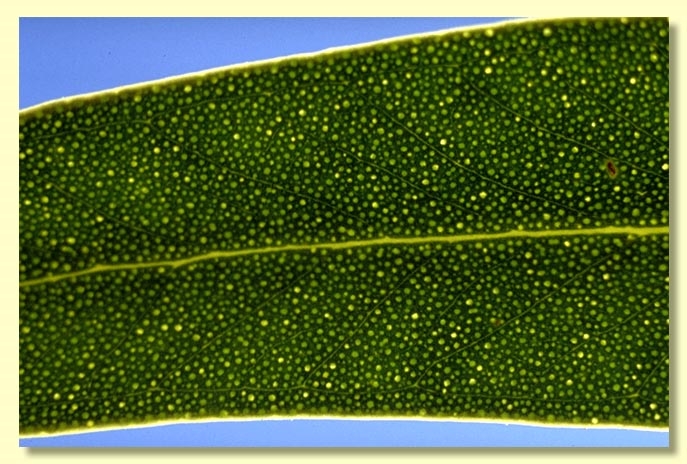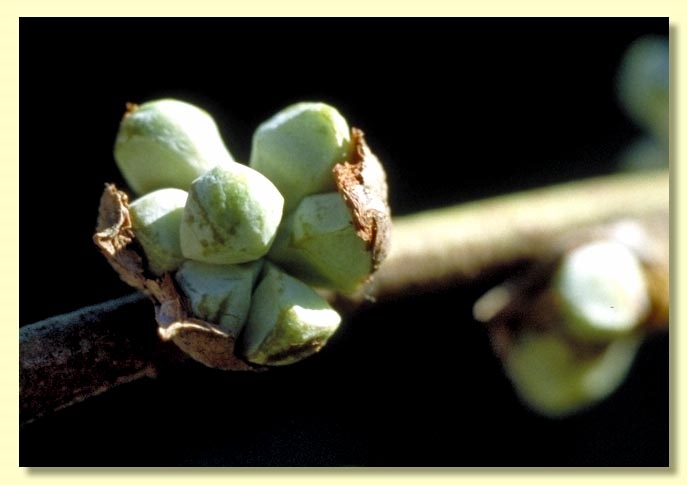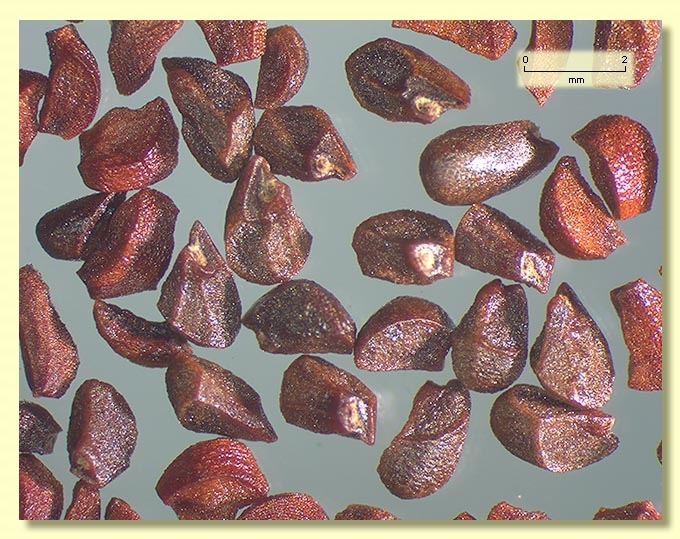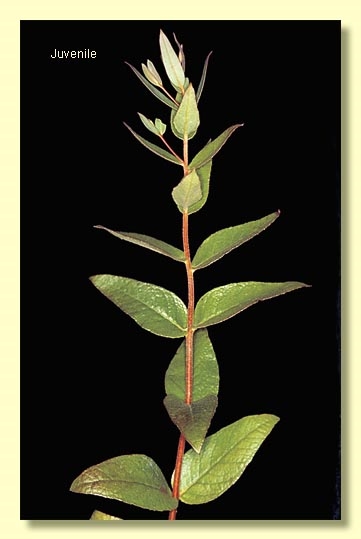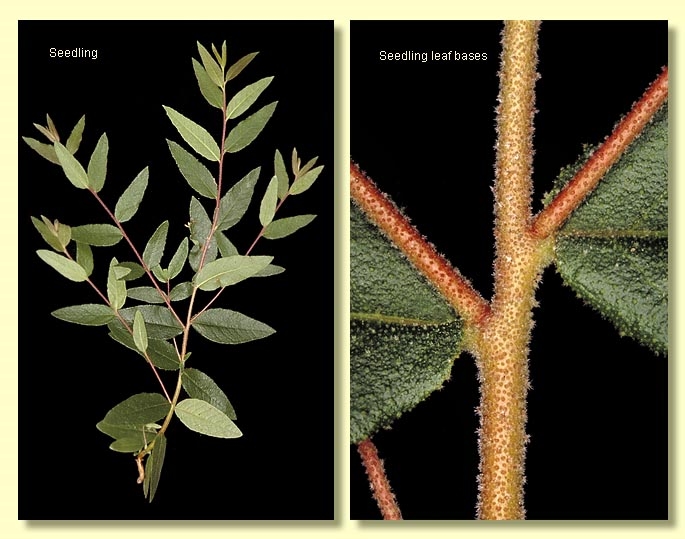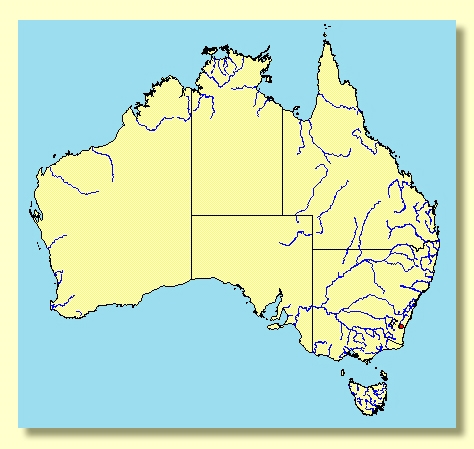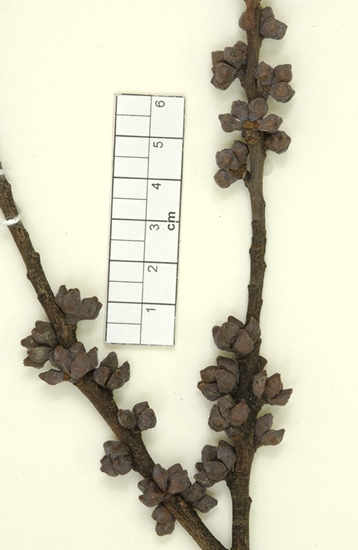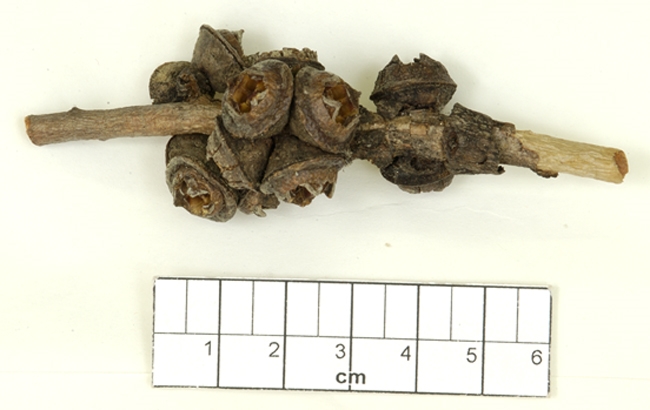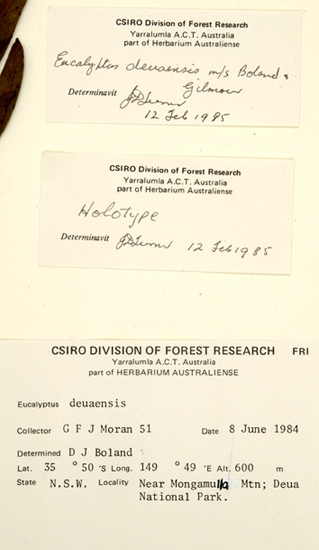Euclid - Online edition
Eucalyptus deuaensis
Eucalyptus | Eucalyptus | Capillulus | Limitares
Bark smooth, grey, brown, pink, white or yellow.
Juvenile growth (coppice or field seedlings to 50 cm): stem rounded in cross-section, scabrid at least to node ca 15; juvenile leaves sessile, opposite until node 9 to 12, then alternate, ovate to lanceolate, 3.5–7.5 cm long, 1.3–2.3 cm wide, margin undulate and scabrid, lamina scabrid until node 13–16, green; older coppice non-scabrid, blue-green, shortly petiolate, erect.
Adult leaves erect, alternate, petiole 0.5–1.2 cm long; blade lanceolate to falcate, 7–10 cm long, 1–2.3 cm wide, base tapering to petiole, concolorous, dull or slightly glossy, blue-green, side-veins obscure, sparsely reticulate or absent reticulation, intramarginal vein ± obscure, oil glands very numerous.
Inflorescence axillary unbranched, peduncles 0–0.4 cm long, buds 7 per umbel, sessile. Mature buds diamond-shaped, ca 0.8 cm long, 0.6–0.7 cm wide, slightly glaucous or green, smooth or warty, longitudinally angled, scar absent, operculum conical to pyramidal, stamens irregularly flexed, anthers reniform to cordate, versatile, dorsifixed, dehiscing by confluent slits, style long, stigma tapered, locules 3 to 5, the placentae each with 2 vertical ovule rows. Flowers white.
Fruit sessile, campanulate, hemispherical or obconical, 0.5–0.6 cm long, 1–1.5 cm wide, sometimes angled longitudinally, disc raised convex to vertical or oblique, valves 3 to 5, exserted.
Seeds brown, 1.5–2.5 mm long, pyramidal or obliquely pyramidal, dorsal surface smooth, hilum terminal.
Cultivated seedlings (measured at ca node 10): cotyledons reniform; stems rounded in cross-section, stellate-hairy to scabrid; leaves sessile for at least 17 nodes, opposite until node 8 to 12 then alternate, lanceolate, 5.5–8.5 cm long, 2–3 cm wide, base truncate to rounded, margin entire or irregular, apex pointed, slightly glossy, green; lamina hairy at first becoming more scabrid up the stem and by node 13–16 smooth or only scabrid on midrib underneath.
Flowering has been recorded in January and November.
A rare, small mallee known from a single stand near Mongamulla Mountain in Deua National Park in southern New South Wales, growing on steep, rocky rhyolite cliffs.
Eucalyptus deuaensis is related to the stringybarks by its stellate-hairy seedlings, and resembles no other species. It is conspicuous in its natural habitat by the mallee habit, smooth bark, 7-budded inflorescences with sessile angular buds, and sessile crowded fruit with prominently raised disc and exserted valves. Leaves are blue-green to olive-green and are usually held erect, have inconspicuous side-veins and no visible tertiary veining. Oil glands are very numerous.
Eucalyptus deuaensis has a somewhat isolated taxonomic position in Eucalyptus subgenus Eucalyptus section Capillulus series Limitares, because of a combination of characters: mallee habit, smooth bark, shortly emergent oil glands with obvious radiating hairs on stems and lower leaves of seedlings and juvenile regrowth, axillary inflorescences with buds having only one operculum and reniform anthers, ovules in two rows, and ± pyramidal seeds.

